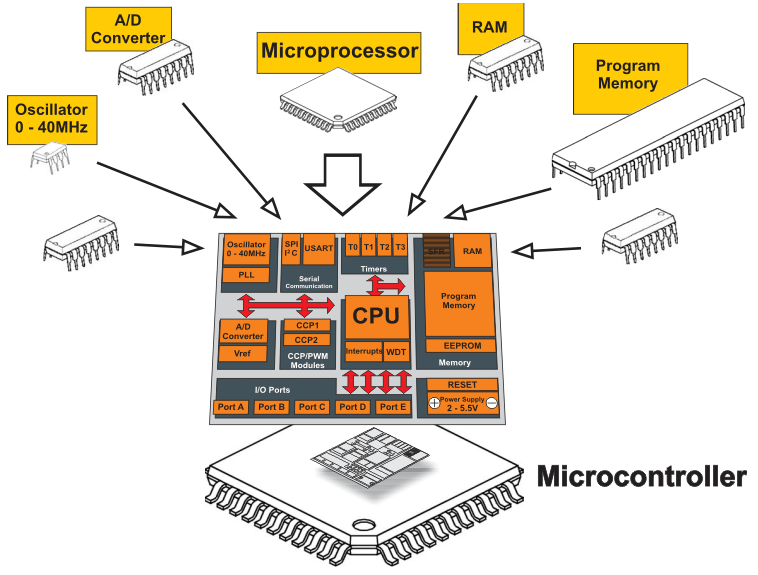The semiconductor device fabrication is the process used to create the integrated circuits, including the microcontroller. It is a multiple-step sequence of photolithographic and chemical processing steps during which electronic circuits are gradually created on a wafer made of pure semiconducting material, Silicon is almost always used, but also used gallium arsenide.
Wafer
Actually the manufacturing process of large scale integration VLSI follows the method (Very Large Scale Integration) using Silicon as raw material.
Microprocessor manufacturing facilities.
General steps of making a silicon Integrated Circuit:
- Wafer preparation, the starting material for the manufacture of circuits is the high purity silicon, with which is created a cylinder that is then sliced. Later is polished for better electrical and mechanical properties.
- Oxidation, is the process which form silicon dioxide (SiO2) on the wafer to create a thin film, transparent and highly reflective surface.
- Diffusion, is a method in which impurity atoms are introduced into the silicon to change its resistivity, the most common impurities are boron, phosphorus and arsenic.
- Ion Implantation, it is another method used to introduce impurities into the semiconductor crystal.
- Deposition by chemical vapor, is a process which leads to the formation of solids in a substrate by chemical reactions of gases, which serves as thermal insulation.
- Metallization, is the process that interconnect the various components forming the integrated circuit (transistors, condesandores, etc.), depositing a metal on the silicon surface.
- Photolithography, is the technique used to define the geometry of the surface of the components of an integrated circuit.
- Packed, a wafer can contain hundreds of circuits, they are separated and are then mounted in capsules, are connected by gold wires, and the package is then sealed with plastic.
Many toxic materials are used in the fabrication process such as arsenic, antimony, phosphorus, arsine, phosphine, and silane,; and highly reactive liquids such as hydrogen peroxide, fuming nitric acid, sulfuric acid, and hydrofluoric acid. It is vital that workers not be directly exposed to these dangerous substances.










